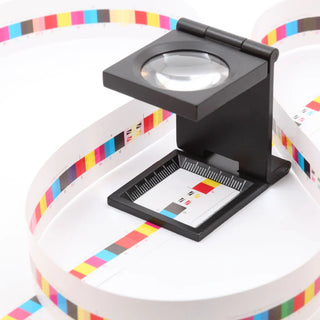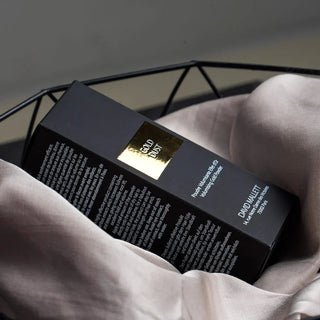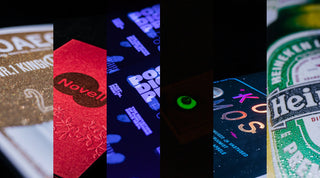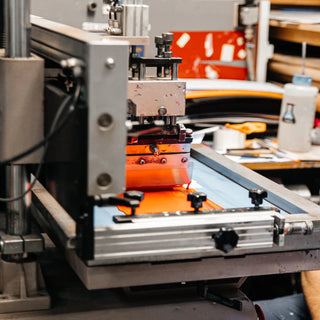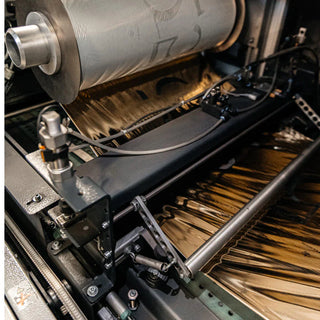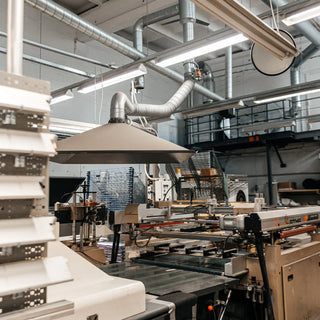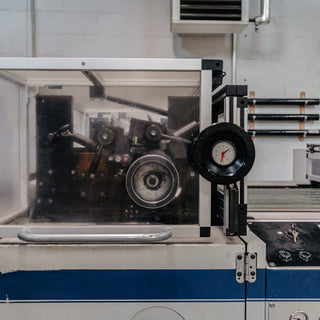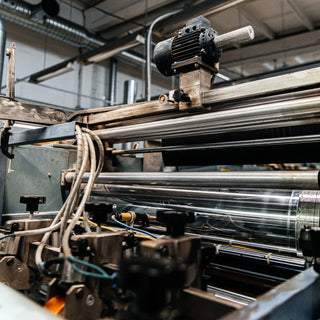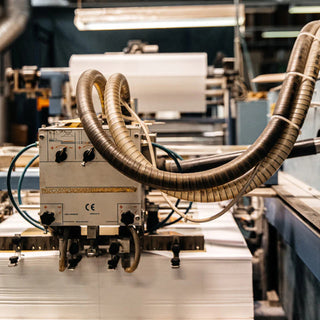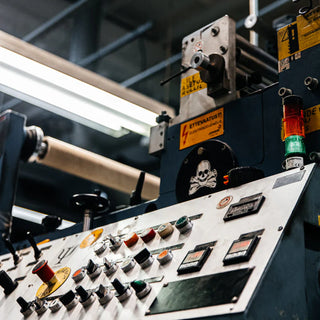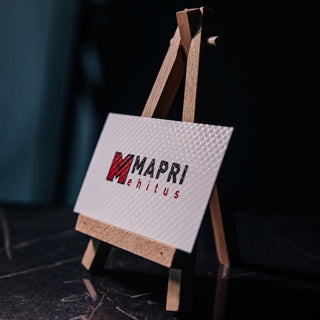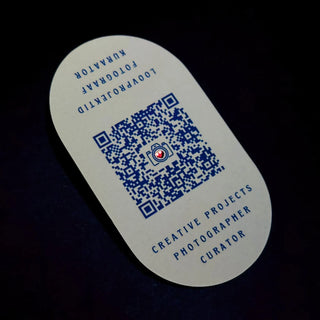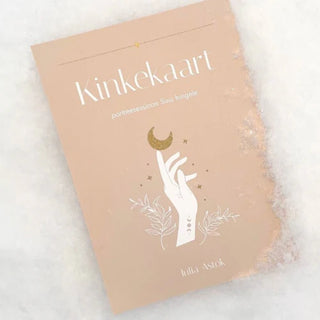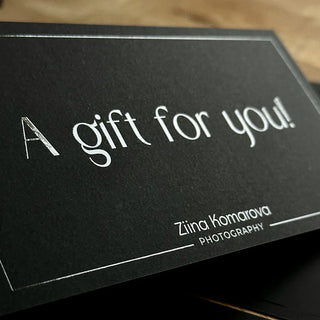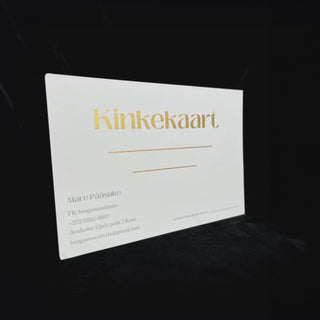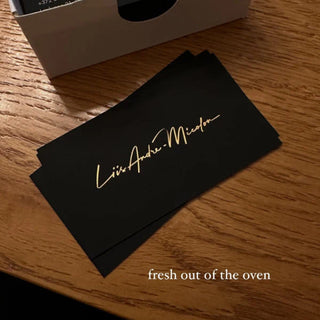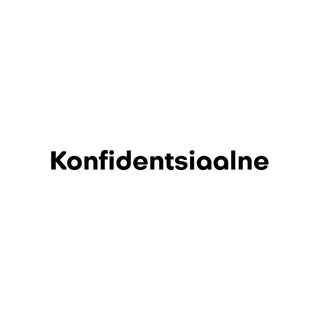Looking at companies' printed materials (brochures, flyers, document covers, etc.) -- especially business card solutions -- the devil may hide in the details, whether there are many or minimally, emphasizing a few selected details.
Is the color selection sufficient to be eye-catching? Does the font choice convey the company's qualities and position? Next comes the choice of printing method (digital printing, offset, or screen printing). How to ensure that the finished printed card is durable, dignified, and attractive? To achieve these goals, it's important to make the right decision when choosing printing material.
This blog will discuss:
- Business card -- first emotion
- Guide for choosing business card material
- Weight and thickness
- Surface finishing and post-processing
- Lamination
- UV spot varnishes and printing effects
- Foils
- Different papers for different fields
- Print your own professional business cards
Business card -- first emotion
A business card is naturally your company's ambassador in the business world. This small card is the key to leaving a memorable impression of your company in the field where you operate, helping to create new relationships with both clients and career development with other companies, while prominently highlighting your name.
What impression do you leave on your colleagues, clients, partners, and others? This depends on your business card's style and essence. First, let's talk about size -- your card should fit into typical business card holders (wallets, card holders after handover). There are two classic size types:
- In the UK, USA, and Australia: 85 x 55 mm (same as credit cards)
- Most common in the rest of the world: 90 x 50 mm
To stand out particularly, cards with different shapes have been created (square, circle, octagon, oval, etc.), but their size is calculated so they fit within the aforementioned standards, considering storage and holding space.
The card should be printed in a way and on material that ensures durability against dropping and carrying in a wallet. Its luxurious nature and appearance are important, so the recipient would want to keep it, perhaps even show it to others.
First, attention should be paid to choosing printing material. Starting from simpler and cheaper classic business card cardstocks (emphasizing printing and printing effects on its surface) to designer papers, where the material's own color and/or surface finish plays a role (rough, hammered, veined, dotted, etc.).
Guide for choosing business card material
There's no specific brand that's the most common material for printing business cards. The most common is still business card cardstock, which is within a certain thickness/weight range.
Weight (thickness)
In the world of printing materials, the most common unit of measurement is gram weight (GSM - grams per square meter) or grams per square meter.
The usual material weight/thickness for business cards is 300 g/m², which is about 1.4 mm (14 Pt, 0.04 inches) thick. Gram weight doesn't always show the material's actual thickness, as many papers are bulkier and feel thicker when held. Therefore, it's recommended to visit the print shop to touch the material yourself and assess its weight, thickness, and strength.
Currently, the new trend is thicker materials -- 700 g/m². Since the selection of such thick materials is limited, gluing papers together has become popular to achieve the desired thickness. This also allows, for example, digital or offset printing on one side and screen printing on colored bulky designer paper on the other side. The result is special cards that are kept and shown to others because they're memorably thick, strong, and uniquely designed. Some have gone even further, gluing multiple papers together so that the color of the middle papers is visible only from the edge.
Surface finishing, surface coating materials, and post-processing options
Starting from the most common and cheapest business card cardstock, we can move on to more special or designer papers, where the selection of different paper types and surface finishes, colors is endless by catalogs.
The main thing that generally distinguishes them first is coated and uncoated papers. The first can be recognized by their chalky and glossy or semi-glossy surface (which are accordingly called semi-coated papers).
Coated papers are predominantly cardstocks and are divided into single and double-sided, their selection is much more limited than uncoated papers. It can be said that most designer papers are uncoated, including those with different surface coating finishes and patterns (rough, sandy, hammered, with different patterns like lines, waves, dots, etc.) Currently, the most popular smooth designer paper is the leather-like Skin paper brand and the wavy Rivers from patterned ones.
Lamination
Cheaper papers can be made exclusive with surface coating materials -- laminates. These are ultra-thin plastics with an adhesive layer, which can have:
- Matte or glossy surface
- Scratch-resistant matte
- Soft touch (leather or rubber-like silky surface)
- Sandy surface
- Patterned (linen fabric, deerskin, wood pattern)
Double-sided laminated paper is more resistant to moisture, corner breaking, and soiling. Currently, the most demanded are matte and soft touch surface finish laminates, which appear exclusive, especially with printing effects like UV spot varnish, 3D varnish, or I-foil.
UV spot varnishes and other printing effects
UV spot varnish is one of the most valued post-processing effects in the printing world, this also applies to business cards. It's a varnish that instantly hardens with a UV lamp, which can be applied with both screen printing and digital technology, allowing coverage of just the desired part of the print (logo, slogan, picture, or other element).
Classic options:
- Regular glossy UV spot varnish
- Matte UV spot varnish
- Relief UV spot varnish
Special solutions:
- 3D varnish (allows 2-4 different height varnish layers on one surface)
- Bubble pattern effect varnish
- Sandy surface structured varnish
- Luminescent varnish (glows in the dark)
- Fluorescent varnish (visible in UV light, used as a security element)
Screen printing special effects:
- Glitter added to UV spot varnish (you can also decide on 30%-100%)
- Pearl dust addition to UV spot varnish
- Tinted effect varnish
All these modern and eye-catching printing effects are available in our house, allowing you to add exactly the kind of finish to your business cards or other prints that best highlights your brand.
Foils
Distinguished are:
- Classic foil (foil with adhesive layer is pressed onto paper or laminate surface)
- Digital I-foil (UV varnish as adhesive)
The latter, unlike classic foil (which is very delicate and can come off upon contact with another paper or something rough), is strong and durable, being valued for this reason especially on business cards, book and magazine covers, and packaging.
Most popular foils:
- Gold and silver (also matte versions)
- Holographic silver
- Copper and rose gold
- Primary colors (yellow, red, orange, carmine/pink, purple, blue, green, black)
Different papers and printing materials for different fields
Different business fields have different approaches to business card design. The following recommendations are based on past needs and experiences, but the basic purpose of a business card is always the same -- to introduce the employee and company.
For example, for medicine, rehabilitation, cosmetics, hairdressers, etc., it's recommended to use simpler, smoother papers or matte laminate, so it's easier to make notes (visit and treatment times, messages, etc.).
In the graphic design field, you should use slightly more advanced post-processing/printing effects, so the main emphasis is on the design that invites to use your services.
With the choice of printing material, you emphasize your and your business's position and what you want to communicate. For example, for doctors, lawyers, counselors, consultants, beauty and health workers (hairdressers, masseurs, nail and eyelash technicians, etc.), the business card is like their business package, communicating service price, luxury, etc.
We've printed for representatives of very different specialties on very different materials, for example, sandpaper for a sanding company, sheet metal for a roofing company. Printing on plastic has also become fashionable, especially on transparent or semi-matte plastic, and these have definitely emphasized their business direction.
For example, photographers have conveyed the camera focus window view of their field's uniqueness, architects have had a ruler printed on the card edge, a wall tile selling company ordered plastic cards with rounded corners for salesmen, who hand the client the card with the words, if you need help, call, but in any case, you can use my card corner to process your new tiling surface joints... Therefore, since plastic cards are weather-resistant, they're especially suitable for outdoor service businesses, such as construction, arboristics, gardening, yard and house facade cleaning companies, etc.
This is how professional business cards are made
Whether simpler and cheaper cards or particularly exclusive and unique solutions, find the right printing method and solution for yourself and a print shop that brings it to life. You can always read more from our blog, if you wish you can also ask for help, and when you're ready, you can also order.
FAQ
What paper is used for business cards?
The most common is 300 g/m² business card cardstock, but designer papers, plastic, and special cards are also used. The newer trend is 700 g/m² or multi-layer cards. Soft touch (silky matte) surface finish is very trendy right now.
Can I print business cards at home?
You certainly can, but we don't recommend it. A professional print shop ensures better quality, durability, and the ability to use special effects (UV varnish, foil, lamination, etc.).
Should business cards be matte or glossy?
This depends on your brand and needs. Matte surface is more popular and elegant today, glossy surface is suitable for bright colors and photos.
What paper is best for business cards?
The best choice depends on your field and purpose:
- Classic choice: 300-350 g/m² cardstock
- Luxury choice: designer papers or multi-layer cards
- Best price-quality ratio: laminated cards

